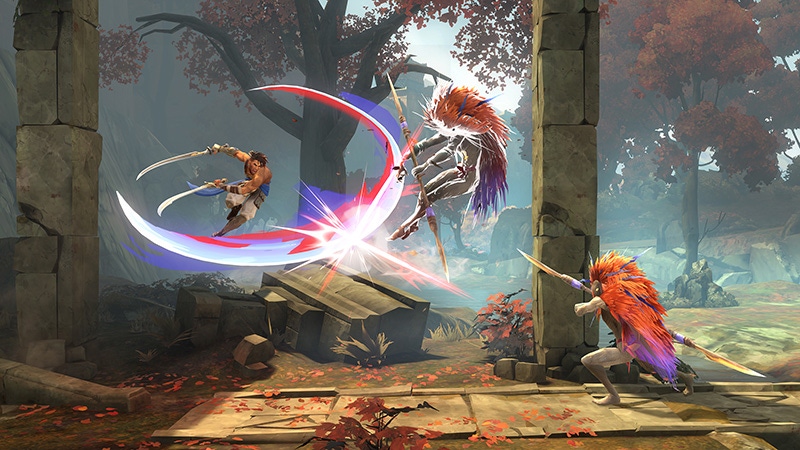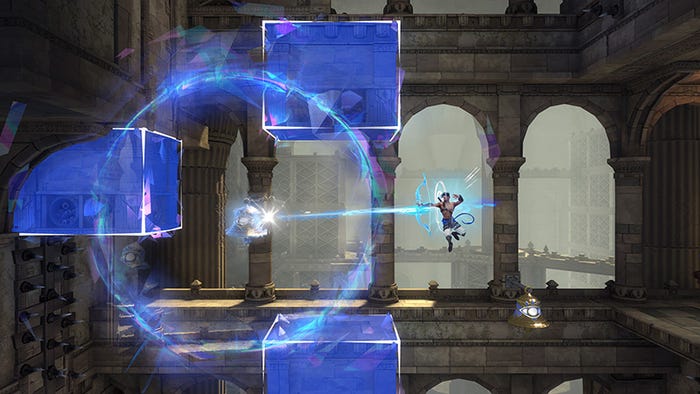
At a Glance
- Metroidvania games like Prince of Persia: The Lost Crown are laden with secret areas unlocked by acquiring powers.
- Ubisoft created a mechanic called "Memory Shards" to help players remember where those areas might be.
Ubisoft Montpellier's gorgeous revival of the Prince of Persia series, Prince of Persia: The Lost Crown is a stunning example of how a developer with strong existing technology pipelines can jump into an expansive new genre. When the studio was given a shot at reviving Prince of Persia, they opted to return the series to its sidescrolling roots by making it a metroidvania.
The metroidvania genre is known for balancing challenging combat, puzzle platforming, and exploring large maps filled with secret areas. Progressing in the story or accessing secret areas in a game like Prince of Persia: The Lost Crown requires players to revisit spaces they've already passed through as they acquire new powers.
But not all players can remember which previously visited areas possess mysterious rooms or inaccessible passageways. Luckily, they don't have to—in this game, players can use what's called a "Memory Shard" to mark down those rooms to revisit later.
Here's how Memory Shards work: if players find a space they want to revisit, they can press a few buttons, and the game takes a screenshot of the room and places it on their in-game map. That's all there is to it.
This simple mechanic (narratively justified by hand-wavey time magic) is fiendishly simple but offers a lot of agency to players less experienced in the genre. As senior game designer Remi Boutin told us, it's an important way to help players manage the cognitive load of the game.
"It happens to a lot of us. We were playing metroidvanias, we took a break, and when looking at our map we forgot what we were trying to do," he said. The mechanic also spiced up what would otherwise have been a somewhat dry experience reading the map.
If you're a developer eager to make your own version of a Memory Shard system, you're in luck. Boutin shared some key design and technical details about how the system works and what limitations it has in a game that makes the most of cross-platform cloud saves.
Memory Shards can also play a role in gameplay
When players press the required button command, the game takes a screenshot with the HUD and UI elements removed. It's taken at the same resolution for every platform the game is on. The player can either press the button quickly to take the photo and have it sent to the map or hold down the button and view it on the map.
Some fun visual and audio effects sell the fantasy of the experience—much like how Mimimi Games honed the feeling of its quicksave system in Shadow Gambit: The Cursed Crew.

Image via Ubisoft.
Another fun layer to the Memory Shard system is that the player can't infinitely create Shards and document every little detail on the game map. Players start with a mere 15 Shards, which can be increased but never set to infinity.
That limitation began as a technical constraint. Boutin explained that because Prince of Persia: The Lost Crown has cloud saves and is a multiplatform game, there's a restriction on the size of saved game files that need to transfer to the cloud between machines. "It also provided an interesting side effect," he said. "Because players have a limited number of Memory Shards they have to manage them efficiently and it helps them to keep their map 'clean'."
That reduces the odds that players will clutter their map and, ironically, make it unreadable in their pursuit of easy traversal. Boutin said that the maximum number of Shards never changed throughout development, but the number they gave to players when the feature is first introduced changed multiple times. Initially, they were given the maximum amount, then later, only a precious few. After playtesting it was locked in at 15—enough to help players get started and still have room to grow.
But there's more. "Offering more Memory Shards as rewards also allowed us to [remind players] about the feature, often by giving them in a chest near a blocked path." Limiting the number of Shards, but allowing the player to earn more, becomes a resource lever designers can manipulate to shape the game experience.
Ubisoft's innovation with the Memory Shards is one any developer with an explorable map should consider, but Boutin warned you should be prepared to iterate on it as you would any other game feature. "It seems so simple that you can think it was easy to produce, but it took tons of iteration and playtest to get a 'natural' feeling."
He said that a lot of work went into deciding when, where, and how to introduce the feature. "We’re super happy with the player reception—they really love the feature and use it a lot!"
About the Author(s)
You May Also Like









